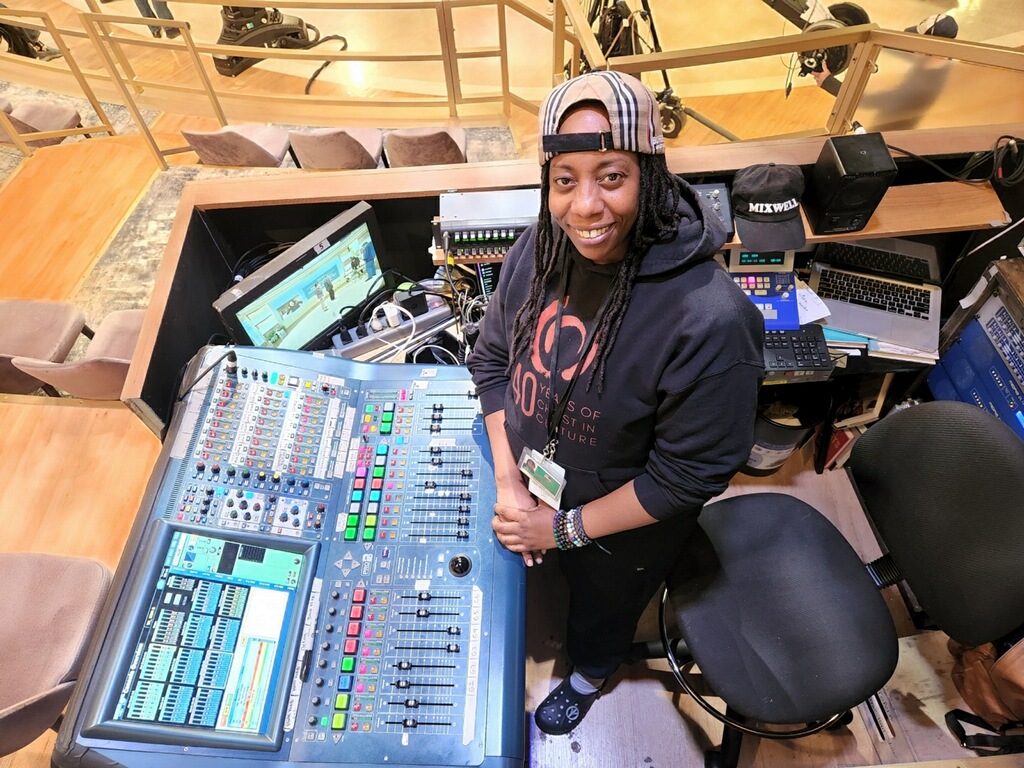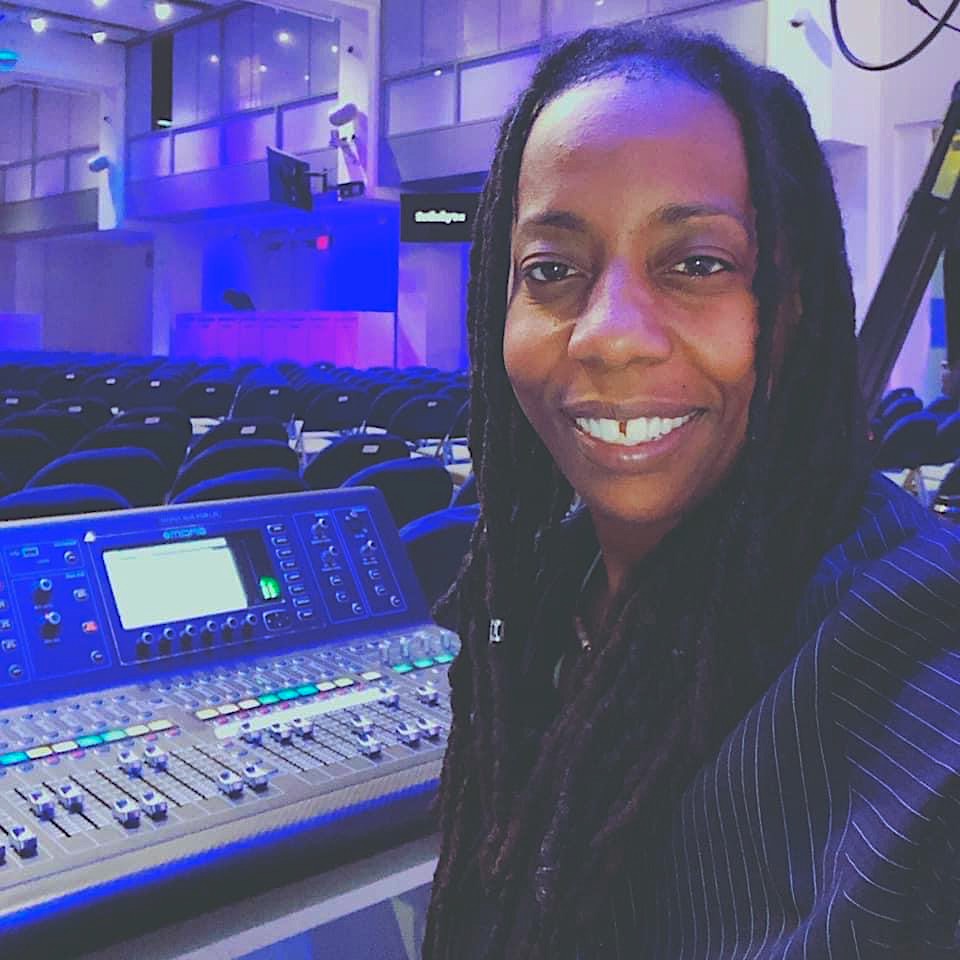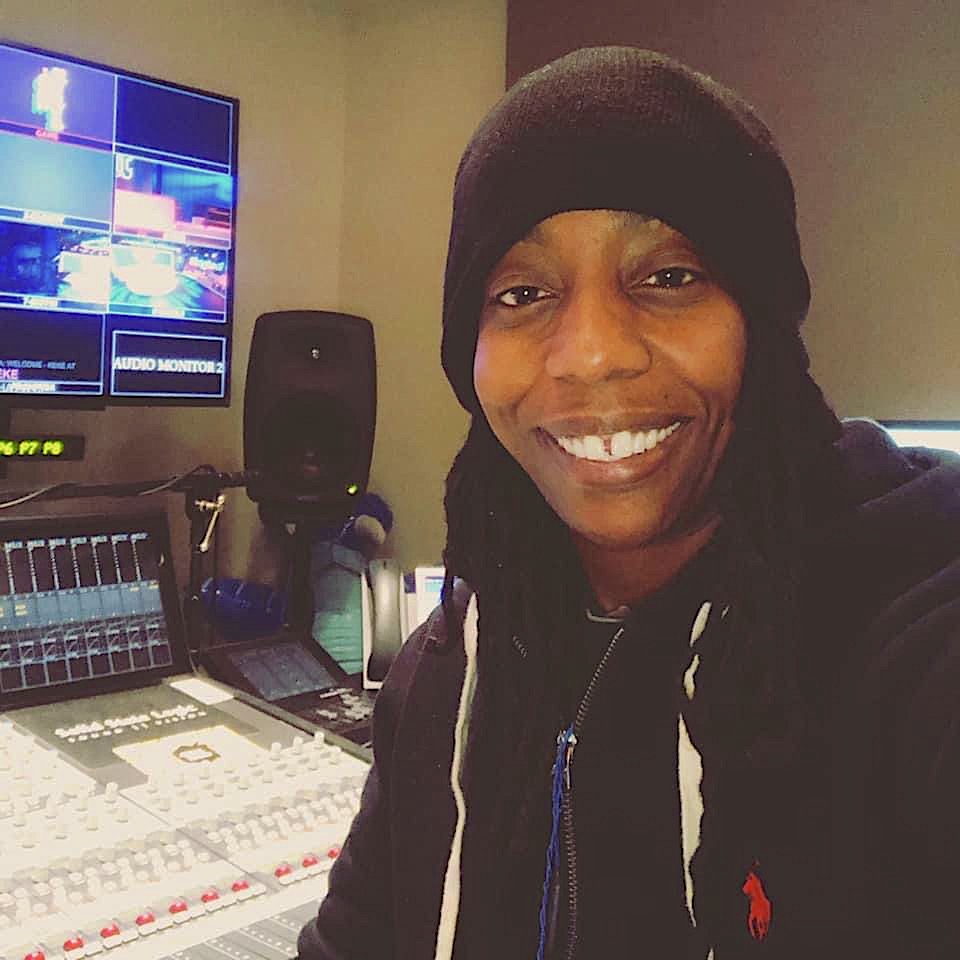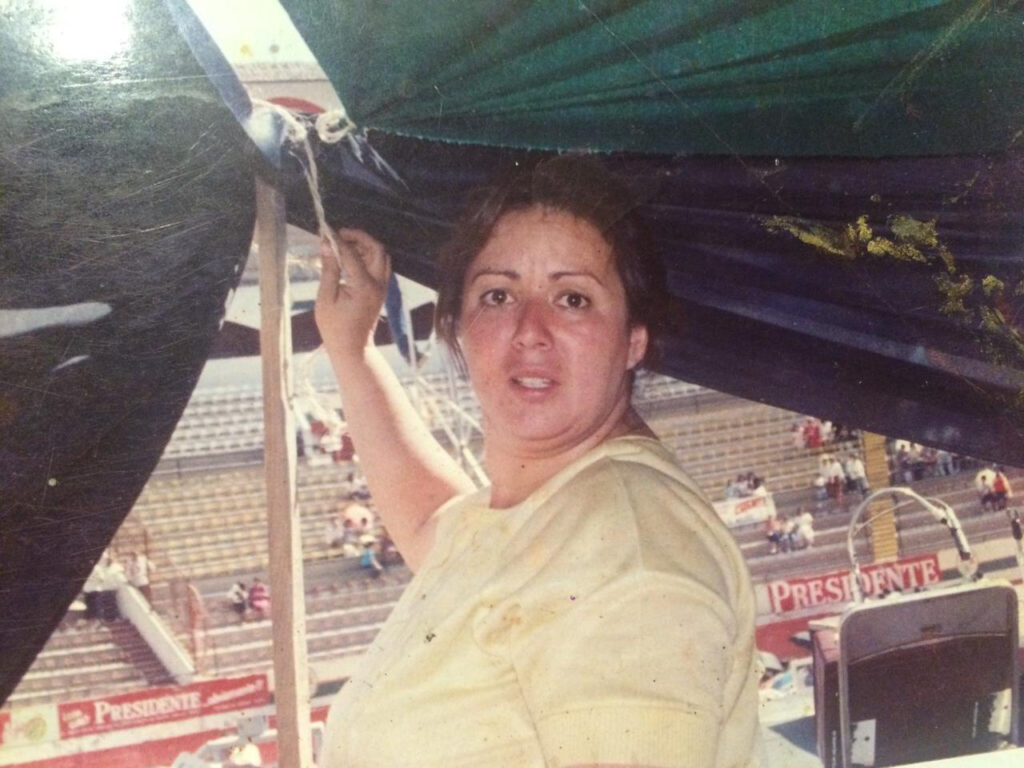Griselda Jiménez primera ingeniera de sonido en México, trabajó por más de treinta años para el Sr. Vicente Fernández, entre muchos otros íconos representativos de la escena musical popular mexicana. El sello que la caracterizó además de su profesionalismo y entrega, fue el interés por transmitir al público lo que el artista estaba sintiendo en cada momento, razón por la cual diversas personalidades buscaron trabajar con ella.
Del Baile a la mezcla.
Griselda viene de una familia relacionada directamente al sonido, sus padres se dedicaban a la renta de audio e instrumentos musicales, fue ahí donde comenzó su aprendizaje en el manejo del equipo de sonido, pero su sueño e interés era ser bailarina “aprendí todo lo del sonido cuando, como actriz, en una gira, mi padre ponía el sonido, pero una vez se enfermó, regresó a Guadalajara y yo me hice cargo del sonido a la vez que actuaba. De esa forma aprendí. De hecho, a mí no me gustaba hacer el sonido en la gira. Lo hacía porque mi padre me ponía a hacerlo. Mi carrera era ser bailarina y actriz”, comenta Griselda.
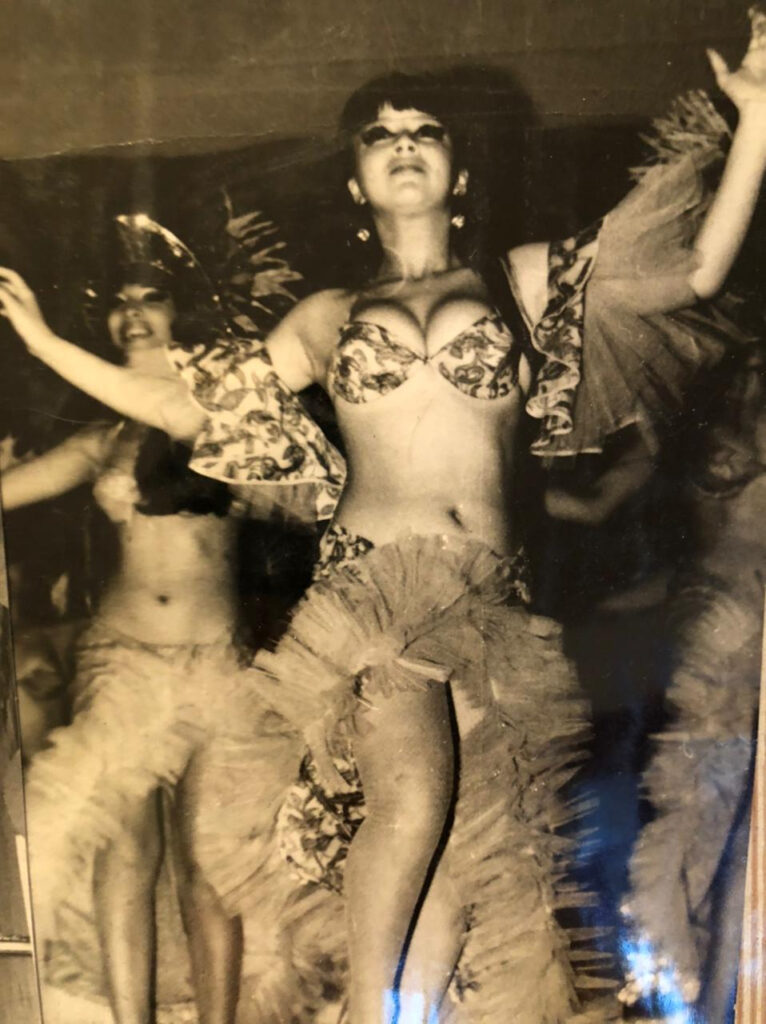
En el año 1969, Griselda comenzó su carrera como bailarina en las caravanas del teatro Blanquita en la ciudad de Guadalajara. Años más tarde se mudo a la Ciudad de México realizando trabajos de suplente como bailarina profesional, dentro de la misma compañía del teatro blanquita, en ese tiempo estaba a cargo la reconocida actriz Margarita Su López, mejor conocida como Margo Su, quien fue escritora y empresaria teatral dentro de la época de oro del cine mexicano.
El trabajar en este recinto, abrió una ventana que sin buscarlo fue donde Griselda tuvo su primer y gran encuentro con la mezcla de sonido en vivo. Un accidente ocasiono la oportunidad de quedarse a cargo del audio de este teatro, Griselda nos lo cuenta– “Por falta de profesionalismo del personal, tuve la oportunidad de estar a cargo del sonido, recuerdo que el encargado del audio se emborrachó y se peleó con la señora Lucha Villa (gran icono de la música Mexicana), ella ya sabía que yo tenía poco conocimiento del audio y me dijo “hazte cargo tú” y corrieron al chavo, en vez de quedarse a terminar por lo menos la función, agarró sus cosas y se fue dejando todo al “ahí se va!”. Fue entonces y desde ese momento que Griselda comenzó su profesión como ingeniera de sonido en vivo.

Su carrera fue avanzando, al inicio sonorizaba a cómicos y artistas que hacían temporadas en el teatro como es el caso de la Sra. Lucha Villa, una de las mas importantes cantantes en la historia del genero regional mexicano, ese encuentro fue fundamental para Griselda ya que fue la primera persona que creyó en ella. Tiempo después, la Sra. Jiménez trabajo con grandes artistas como Pepe Jara, Juan Gabriel, Imelda Miller, Los Platers, La Sonora Santanera, Irma Serrano, Los Panchos, Pérez Prado, Lola Beltrán, las hermanas Jiménez y Don Vicente Fernández, entre muchos otros más.
El profesionalismo, la humildad y decisión, herramientas clave para el desarrollo.
Griselda ha demostrado durante toda su carrera humildad y profesionalismo; principios básicos por los que ha logrado mantenerse tantos años dentro de la industria, como fue el encuentro con un gran icono que sin imaginarlo marcaria su carrera.
En el año 1982, Don Vicente Fernández tuvo algunos problemas con la personalidad de sus ingenieros de audio y pensó que al tener a una mujer encargada de su sonido, sería mucho mas fácil la relación, entonces le propuso a Griselda quedarse de planta. Casualmente los ingenieros eran sus hermanos, la reacción inmediata fue decirle: ‘No señor, usted es artista de mis hermanos y yo no me meto’, acto seguido fue hablar con su familia quienes le dijeron que tomara la oportunidad y trabajara con él.
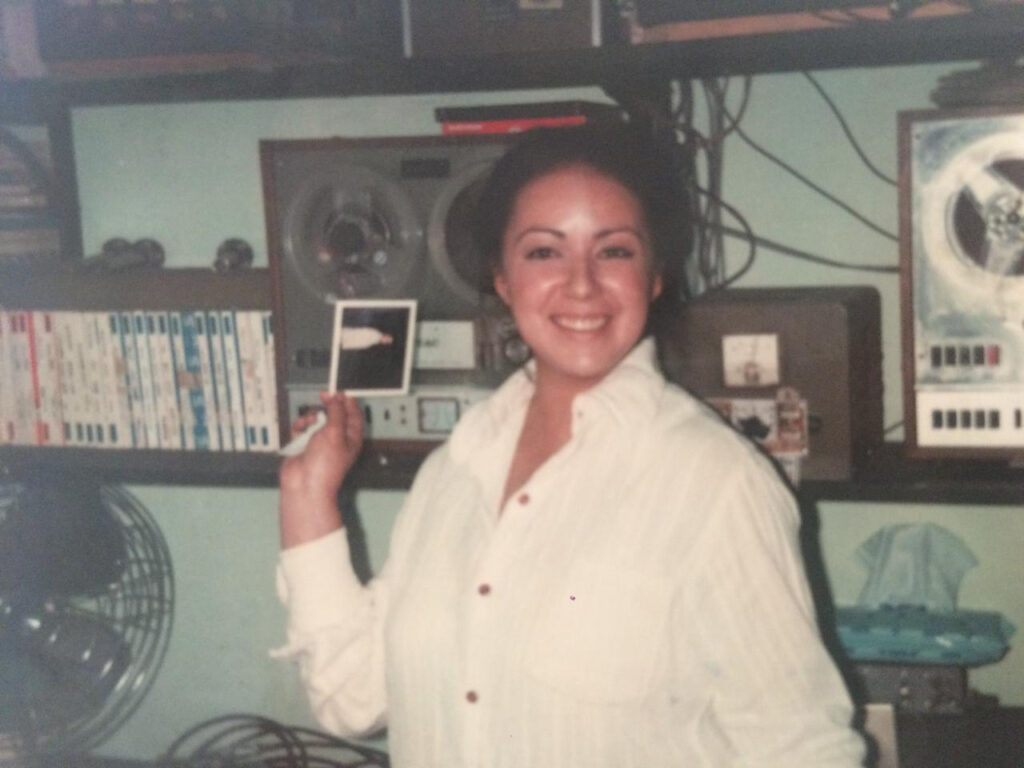
Después de más de treinta y tres años de giras Don Vicente Fernández se retira de los escenarios hace aproximadamente 5 años, Griselda estaba decidida en hacerlo junto con el pero la señora Edith Márquez le pidió hacer algunas fechas con ella, Griselda siempre la ha considerado como su hija por su gran corazón y calidad humana, en agradecimiento acepto realizar los conciertos siendo estas sus ultimas mezclas antes de retirarse de su profesión como ingeniera de sonido.
Preparación y conocimiento empírico.
En esos años, no existían escuelas en donde se pudiera estudiar la carrera de ingeniero de sonido por lo que todos los conocimientos de audio, los fue adquiriendo en la práctica, con experiencias, día a día nuevos retos a vencer, con gusto y orgullo, Griselda logró ser una de los mejores ingenieros de audio en México.
La adrenalina fue clave para tomar el camino del sonido en vivo, aunque realizó trabajos en estudio de grabación, para Griselda no era lo mismo ya que en los estudios no sentía la misma sensación, así que prefirió la presión y la adrenalina de trabajar en los escenarios con artistas de gran presencia.
“Fui aprendiendo empíricamente, viendo shows en televisión pero en donde realmente aprendí mucho más fue cuando íbamos de gira a los Estados Unidos con Vicente. Los mismos ingenieros de allá, sentían curiosidad al ver que una mujer mexicana trabajaba como ingeniera y me ayudaban”. Comenta la ingeniera.
Abrir camino en un medio mayormente dominado por hombres.
“Al inicio fue bastante difícil estar en un medio en donde no existían mujeres realizando el trabajo técnico”. Con su carácter, tenacidad y el apoyo de varias personas como su esposo Miguel Lara (con quien se caso en el año 1975 hasta que enviudo en el año 2012) y el apoyo de su grupo de trabajo Enrique Díaz, Fidel Pérez y Diego Valdivia, trabajadores que siempre estuvieron a su lado logró tener un lugar en la industria y ganarse el respeto de muchos profesionales. En palabras de Griselda “Como mujer en un ´Trabajo de hombres´ fue complicado pero no imposible”.
La confianza es lo mas importante.
“Como monitorista es fundamental que sin importar el estado de animo con el que salga al escenario el/la artista se sientan respaldados por mi, en el caso de Vicente Fernández, el sistema de monitoreo que utilizaba eran ocho monitores de piso solo para el, diversos monitores de piso para los músicos y seis puntos de side-fill. ¡Todo mundo decía que estaba poniendo un PA para monitores!, la razón es que debía de ser impactante” comenta Griselda, “Calculo que la presión sonora debía de alcanzar no menos de 100dB. El primer sonido que emitía el artista era crucial, si todo estaba bien, volteaba a verme con total confianza y entonces sabia que su sonido estaba tal cual lo deseaba e incluso me pedía que bajara el nivel”. Tiempo más tarde, se fue corriendo la voz y muchos otros artistas comenzaron a pedir el mismo monitoreo, ‘La única que lo hace es la gordita, les decía Vicente’.
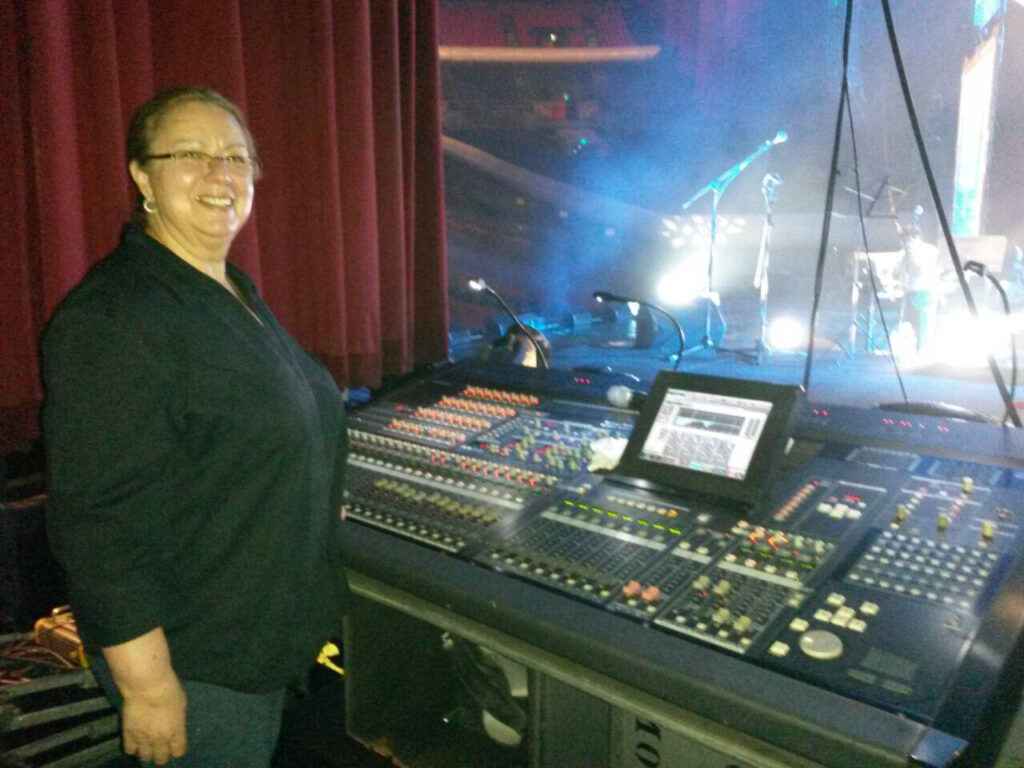
De lo análogo a lo digital.
“Vicente sólo utilizaba tres micrófonos: uno para violines, otro para armonías y otro para trompetas. Yo no estaba muy de acuerdo en eso, así que lo fui enseñando a sonorizar al mariachi. Él decía que la gente lo quería escuchar a él y no al mariachi, pero yo siempre le sostuve que sin el mariachi la gente no sabría qué canción sonaría. Era difícil trabajar con él, pero poco a poco fui cambiando su pensamiento. Yo fui quien lo enseñó a utilizar micrófonos inalámbricos hasta el punto en el que comenzó a detestar los micrófonos de cable porque le ensuciaba el traje”, recuerda “Poco más tarde comencé a trabajar mucho mas cercano con los músicos, porque cuando comenzaba el show, se hacían para atrás para escucharse, la razón era que no estaban bien microfoneados así que lo cambie, logrando que se escucharan como se debía. De esa forma todos notaron que mi mariachi sonaba distinto, como si fueran cincuenta, pero en realidad eran doce”.
Mi preferencia de equipo fue cambiando con los años, siempre hay que actualizarse, aprender y mejorar cada día. Griselda comenzó con un par de bocinas Cerwin Vega y una consola Montarbo en una camioneta Dodge doble cabina 1980, siempre acompañada de su esposo quien la apoyaba en todo momento. En ese tiempo era muy complicado tener el equipo ideal por lo que no tenia como tal una preferencia de marcas, con excepción de la microfonía, usaba micrófonos shure y sennheiser, comenta Griselda “De ahí, lo que me pusieran lo hacia sonar”
Con el paso de los años, formó su equipo técnico y también fue adquiriendo equipo de sonido, nunca olvidando el estar al día con la tecnología. Griselda nos platica “todo mi equipo eran procesadores para el sistema KF850, rack de ecualizadores, mis efectos Roland 3000 que es el que a Vicente le gustaba.
Después de un tiempo, los amigos estadounidenses me marcaron para pagarme la capacitación en ingeniería porque la gira de Vicente había salido en las revistas en el primer lugar. Y usaba una consola análoga. Así me fui a Los Angeles, estuve en un curso intensivo de una semana y me metieron luego a un show a manejar la consola digital”, menciona Griselda Jiménez y continua, “Todo fue rápido porque el siguiente fin de semana ya debía irme a otra gira con Vicente; llevaban la análoga, (una Midas, y cuando hicimos el cambio fue a una Digico SD5), con todos mis periféricos. Al final del primer show todo salió muy bien y vi a Vicente muy contento”.
La ingeniera menciona, “En cuanto a los monitores, siempre utilizamos de piso aunque fueron cambiando con los años porque los escenarios de Vicente eran centrales y giratorios, así que tenia que hacer diferentes arreglos, para los side-fills teníamos que colgarlos de la iluminación y los bajábamos antes del show para hacer cuatro puntos de referencia. El hacer monitores para Vicente fue bastante complejo por las necesidades que el exigía, cada vez pedía mas presión sonora llegando a los 110db firmes como base. Él me permitía tres feedbacks máximo durante el show, aunque nunca los tuve, por eso pedía ecualizadores independientes.
“Creo que las mujeres tenemos naturalmente un sentimiento y somos dedicadas, claro que podemos hacer el trabajo que se dice ser para hombres como es el caso de la ingeniería de sonido.
Yo comencé como bailarina y puede ser que el tener mas desarrollado el sentido musical me ayudara en la mezcla. Para mi comenzó como sorpresa que se transformó en una necesidad y retos que yo sola me ponía. Pasé momentos complicados entre llanto y temor pero aunque sentí miedo a lo desconocido, constantemente me decía que lo podía lograr, recordando cada momento a mis hijas Imelda y Rocio Lara que me han brindado el apoyo y sustento para superar todos los obstáculos”
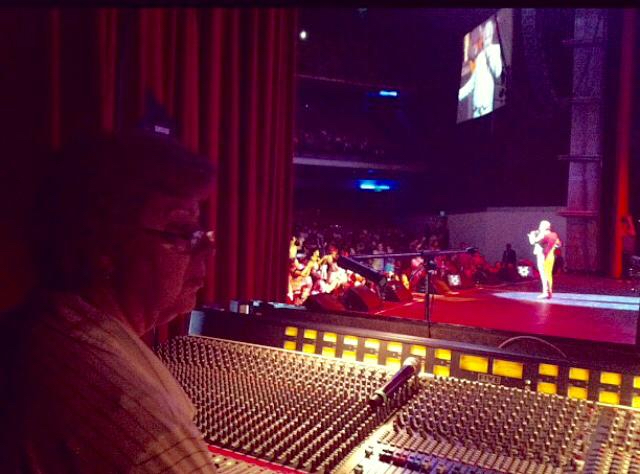
¿Que es lo que mas te gusta de estar en tour?
Disfruto mucho viajar y poder realizar prueba de sonido en diferentes recintos.
¿Cuál es tu actividad favorita?
Estar en casa con mi esposo e hijas.
¿Cual es tu meta a largo plazo?
Disfrutar a mi familia y la vida.
¿Que obstáculos y/o barreras has enfrentado?
Existen muchos obstáculos pero todos se pueden superar.
¿Como haz lidiado con ellos?
Con mucha paciencia, amor, honestidad y lo mas importante de todo ser constante en todo momento.
¿Algún consejo para alguna mujer que quiera entrar a esta industria?
No pierdas la pasión y amor a tu profesión, ignora los comentarios negativos, sigue actualizándote en todo momento y no te compares con nadie; cada persona es única y cada una tenemos estilos diferentes para mezclar.

